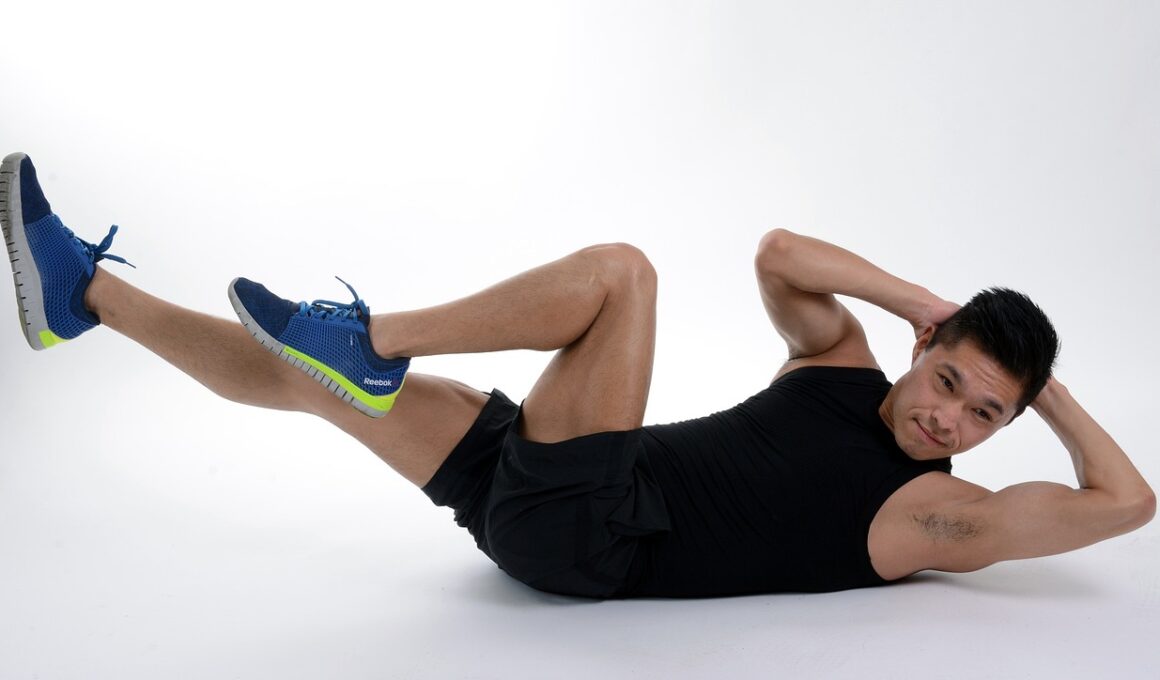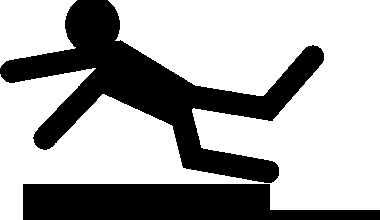How to Progress Bodyweight Exercises for Maximum Strength
Bodyweight exercises are an effective way to build strength in your lower body without the need for equipment. To begin progressing these exercises, it’s essential to focus on proper form. Mastering techniques like squats, lunges, and glute bridges creates a solid foundation. Each movement should be executed with control while maintaining body alignment. Additionally, gradually increasing difficulty can significantly enhance strength development. For example, consider transitioning from basic squats to single-leg variations. It not only targets your stabilizing muscles but also challenges your overall balance. Another effective progression is adjusting the tempo; slow down your repetitions to increase time under tension. Incorporating pauses at the bottom of the squat or during a lunge can also contribute to muscle activation. Furthermore, ensuring adequate rest and recovery is vital for muscle growth. This allows your body to repair and strengthen, preventing fatigue or overtraining. Combine these principles with a personalized workout routine that includes diverse exercises. This holistic approach will help to maximize strength gains and improve stability in your lower body.
It’s important to understand that nutrition plays a crucial role in supporting your bodyweight strength training. Proper fueling of your body will ensure you have the energy required for each workout session. Focus on a balanced diet rich in whole foods; this includes proteins, healthy fats, and carbohydrates. Lean meats, legumes, nuts, and avocados provide essential nutrients for recovery and growth. Hydration is another vital component; always drink sufficient water before, during, and after your workout to improve performance and recovery. Tracking your macronutrient intake can also provide insights into how your body responds to different foods while you progress through your routines. Additionally, consider consulting a nutritionist for personalized advice tailored to your specific goals. Combining sound nutrition with your workout routine enhances results and promotes better performance during bodyweight exercises. Moreover, many individuals overlook the importance of mental strength. Visualization techniques can be beneficial for achieving fitness goals, guiding you through challenging exercises. Stay consistent, celebrate small victories, and stay focused on your progress. Challenges may arise, but maintaining a positive mindset will propel you forward in your strength training journey.
Incorporating Variations for Enhanced Strength
Once you’ve mastered the basics, integrating variations into your lower body workouts will aid in muscle progression. Variations stimulate different muscle groups and can keep workouts engaging. For instance, explore variations like jump squats or pistol squats to introduce explosive movements. These functional exercises enhance power and agility while targeting multiple muscle groups simultaneously. Resistance can also be added; when comfortable with bodyweight squats, holding weights, or a backpack can introduce more resistance. This gradual addition challenges the muscles further without losing proper form. Additionally, consider plyometric exercises. These workouts, which utilize explosive movements, recruit fast-twitch muscle fibers, greatly impacting strength and power. High-intensity plyometric drills can elevate heart rates, burning more calories while building lean muscle mass. Calf raises, step-ups, and Bulgarian split squats are further examples of beneficial exercises that can diversify your strength training. Lastly, ensure to regularly swap out variations to prevent plateaus—you want your body to continually be challenged. Set specific goals for each workout to give yourself motivation as you strive towards increased strength and improved overall physical fitness.
Strength training isn’t solely about lower body exercises; integrating core stability is essential for overall strength achievements. A strong core not only supports dynamic lower body movements but also protects against injuries. Exercises like planks, glute bridges, and leg raises can be incorporated as supportive workouts. For example, a plank focused on core stability can be paired with lunge movements to enhance coordination and strength simultaneously. Additionally, consider focusing on muscle engagement during lower body exercises to maximize effectiveness. For instance, squeezing your glutes at the top of squats affirms muscle activation and promotes growth. Exploring various stances during these workouts can also offer different challenges; try changing foot placements or performing sumo squats. As you progress, think about how body mechanics play a role in overall strength training. Engaging in both strength and flexibility workouts ensures balanced results, reducing the risk of injury. Stretching routine post-workout is equally important. Implementing it can enhance flexibility, allowing for improved movement mechanics on subsequent workouts, thereby leading to more successful training sessions.
The Importance of Consistency and Tracking Progress
Consistency in exercise routines is crucial to achieving the desired outcomes in lower body strength training. Make a schedule for your workouts and stick to it. Discipline will accumulate results over time, leading to increased strength and improved performance. Consider keeping a fitness journal or using an app to track progress. Document your workouts, noting exercises, repetitions, and any additional variations applied. This practice enables you to reflect on your advancements, ensuring accountability. Further, setting short and long-term goals will help maintain motivation. Short-term goals could include achieving more reps with perfect form during a set, while long-term goals may encompass maxing out bodyweight squats within a few months. Additionally, varying workout routines every few weeks lets the body adapt, preventing stagnation. Try alternating periods of progressive overload with lighter weeks, ensuring recovery while still maintaining consistency. Don’t be afraid to seek accountability partners, as having support from friends or fitness communities can boost encouragement levels. They can also provide helpful feedback and constructive criticism throughout your training process.
Rest days might seem counteractive, but they are essential components of a successful lower body training program. Recovery time allows muscles to repair and grow stronger, preventing burnout or overtraining. It’s important to recognize signs of fatigue and adjust your routine accordingly. Incorporate active recovery activities such as light yoga, stretching, or easy walks to maintain mobility without straining muscles further. Balance is key; don’t let rest keep you from achieving your strength goals. Aim for a mix of challenging workouts and rest days each week, structuring a well-rounded program that allows for muscle growth. As fitness levels improve, some techniques such as active recovery intervals can be beneficial, allowing you to maintain engagement while ensuring sufficient recovery. Supplements may also help during recovery but consult a medical professional before adding them to avoid any health risks. Prioritize sleep as part of your recovery, as restorative sleep is vital for muscle recovery. The body uses this time to heal, allowing you to perform at higher tiers in your next workout session.
Final Thoughts on Bodyweight Training Progressions
In conclusion, effectively progressing bodyweight exercises for maximum strength revolves around varying techniques while focusing on both aspects of training and nutrition. As you navigate through different approaches, consistency will remain a pillar for achieving desired results. Understand that, while lower body exercises are a focal point, integrating supportive core workouts will transform your overall performance. Remember to track progress diligently to identify peaks and plateaus. Make sure your body is also allowed adequate time for recovery, reinforcing the progress you make with dedicated effort. Most importantly, stay open-minded about your fitness journey. Adapt and change as necessary, finding what empowers you to push your limits. Engage positively with your partner or community, and include them in your fitness habits to maximize enjoyment and motivation along the way. As you embrace your training, appreciate the strength you develop—a testament to your hard work, dedication, and love for movement. Ultimately, continue to challenge yourself and set new fitness milestones as you evolve through your bodyweight strength training journey.
In summary:
- Master the basics of bodyweight exercises for the best foundation.
- Progress through variations, adjusting tempo and resistance effectively.
- Integrate core stability for overall strength and balance.
- Maintain consistency and document progress to remain accountable.
- Prioritize recovery time to promote muscle growth successfully.


